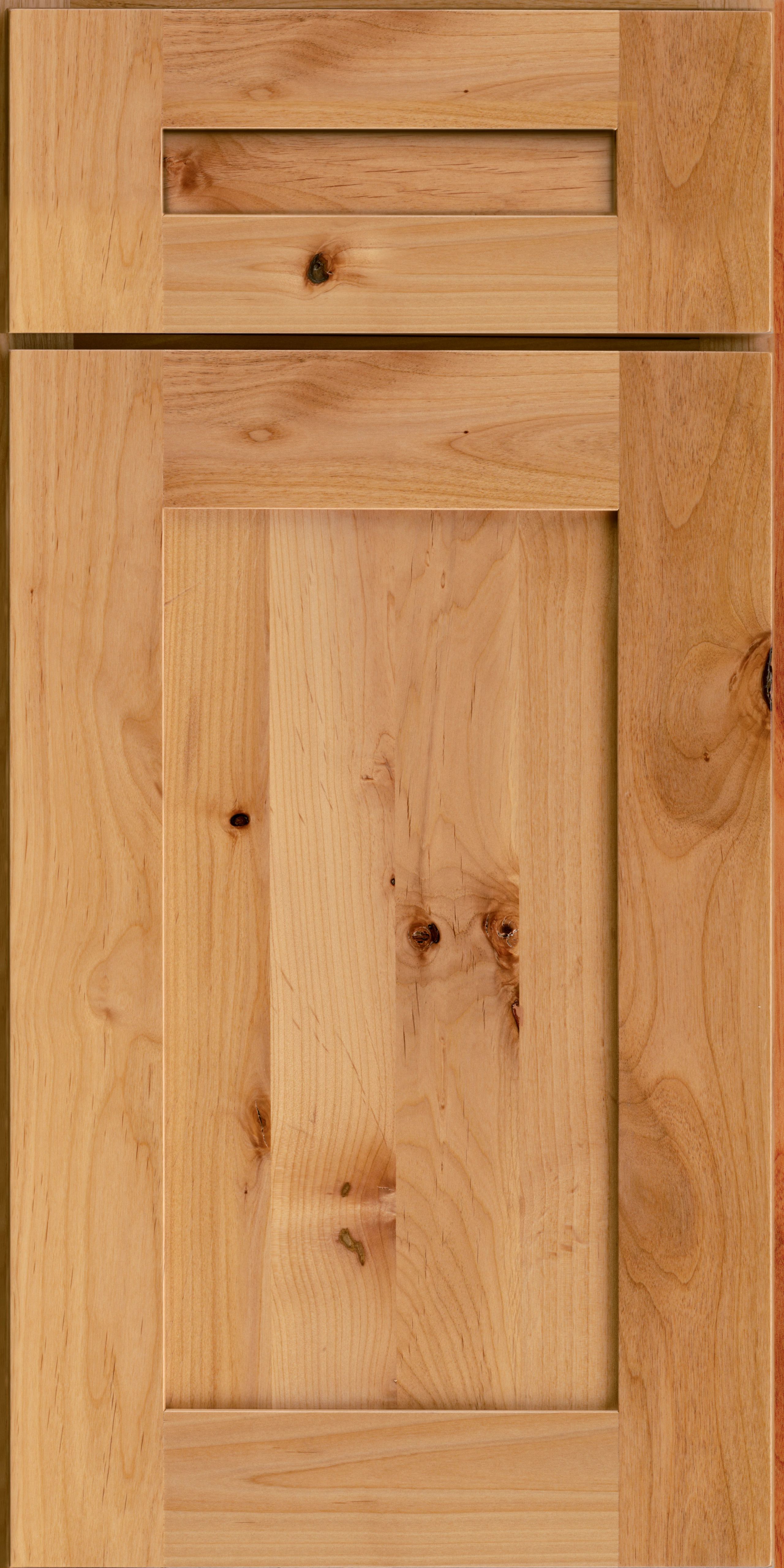As a hardwood that’s stable and easy to work with, Alder has become a favorite species for woodworking projects of all kinds. You’ll find Alder used in furniture, interior doors, and musical instruments – including almost all Fender® electric guitar bodies since the mid-1950s. Let’s walk through Alder wood characteristics and see why you’ll love it for your kitchen and bath cabinets.

KraftMaid Shaker-style cabinet door in Natural finish showing knotty woodgrain appearance of Rustic Alder species
The woodgrain of Alder is fairly uniform and generally runs straight and parallel – creating a fine, smooth, and tight grain similar to Maple or Birch.
Though the woodgrain pattern of Alder could be called subtle, the overall look is anything but. That’s because KraftMaid uses knotty Alder in our cabinets. This grade of lumber features more irregular characteristics, like knots of various sizes and darker striations caused by mineral streaking. These random (and charming) quirks give our Rustic Alder door styles their signature informal look.
In its natural state, Alder is light tan in color with a light amber or reddish undertone. Like Cherry , it tends to mellow, or darken, over time.
Choosing a finish for Alder is easy because it accepts stain well.
Alder is considered a North American hardwood based on the distinction of it being a deciduous, flowering tree versus a needle-bearing softwood conifer.
When most people hear the term hardwood, they think of strength and durability – the literal hardness of the wood – not the biological type of tree. Look to the Janka Hardness Rating to measure how well a wood species can stand up to dings and dents of real life.
Here’s how Alder compares to a few other common wood species you might find in and around your home. The higher the Janka rating number, the harder the wood:
| SPECIES | CLASSIFICATION | JANKA HARDNESS RATING |
|---|---|---|
| Red Mahogany | Hardwood | 2,697 |
| Teak | Hardwood | 2,330 |
| Hickory | Hardwood | 1,820 |
| Hard Maple | Hardwood | 1,450 |
| Red Oak | Hardwood | 1,290 |
| Cherry | Hardwood | 995 |
| Southern Yellow Pine | Softwood | 870 |
| Alder | Hardwood | 590 |
| Eastern White Pine | Softwood | 380 |
| Balsa | Hardwood | 70 |
With a Janka Hardness Rating of 590, Alder is “softer” than other common hardwood species. While still plenty tough to be used in cabinetry, you may prefer a harder species because life in your home includes spirited kids or rambunctious pets. (Consider our Rustic Hickory or Rustic Maple door options. These harder species are less likely to suffer dents and scratches, but offer a knotty, organic look that mimics the appearance of Rustic Alder.)